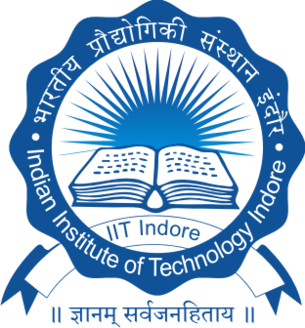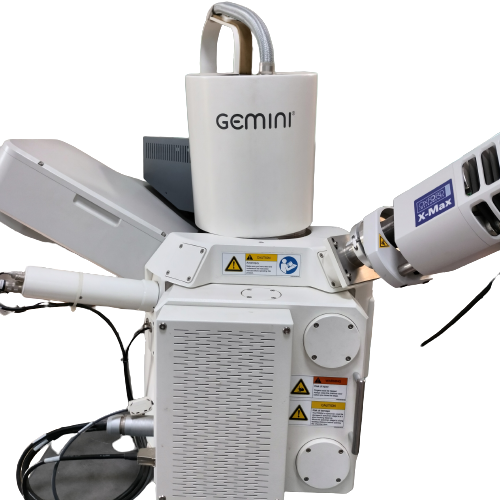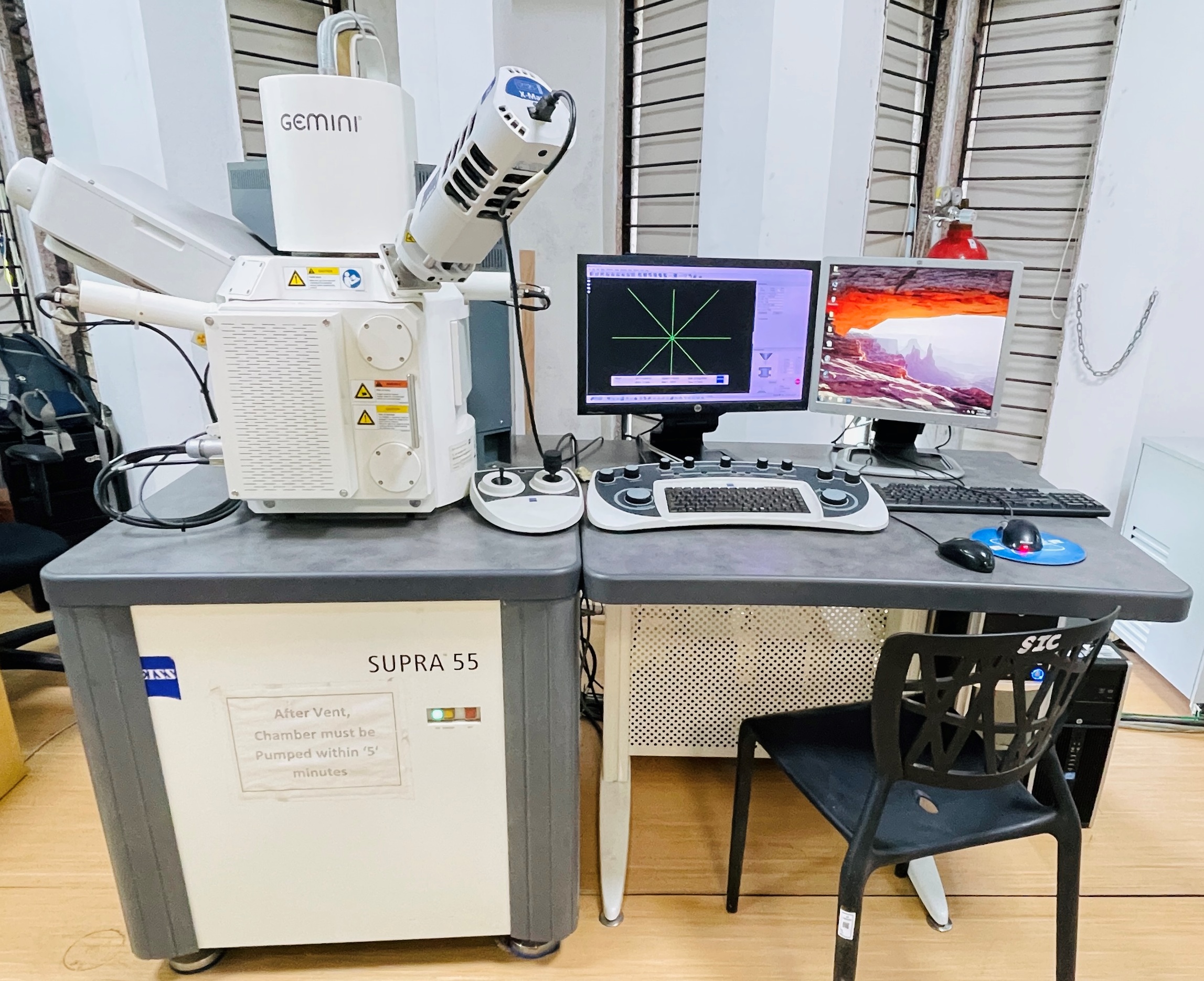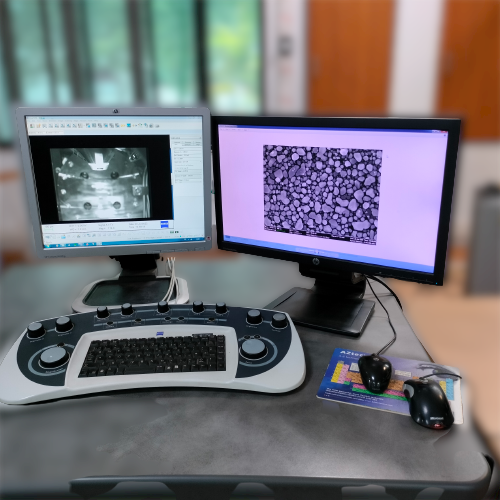Model
FE-SEM Supra 55 (Carl Zeiss, Germany)
Features
GEMINI Technology with high efficiency in-lens detector and no magnetic field at specimen level.
Superb resolution and image quality at high and low operating voltages.
Extremely wide operating voltage range from 0.02-20kV.
Designed-in ease of use with minimal adjustments required when changing operating conditions.
Short analytical working distance of 8.5 mm for simultaneous high resolution imaging and X-ray analysis.
High probe current (up to 100 nA) with high stability (better than 0.2%/h) for precise analytical results.
Multi-User friendly with Windows® based SmartSEM control software.
The Supra 55 FE-SEM, with its combination of SE, InLens, and EDX detectors, offers a comprehensive suite of tools for advanced materials characterization, making it a versatile instrument for research and industrial applications across various fields
Applications
1. High-Resolution Imaging
- Nanomaterial Characterization: The Supra 55 FE-SEM provides exceptional resolution, making it ideal for imaging nanostructures, such as nanoparticles, nanowires, and thin films. The InLens detector enhances surface detail visibility at low voltages, allowing for clear observation of fine features.
- Biological Samples: The high-resolution imaging capability is useful in visualizing the detailed surface morphology of biological samples, such as cells, tissues, and biofilms, without extensive sample preparation.
2. Surface Topography Analysis
- Microelectronics and Semiconductor Industry: The SE detector is excellent for analyzing surface topography, which is crucial in the semiconductor industry for inspecting the surface quality of microelectronic devices, detecting defects, and evaluating fabrication processes.
- Material Science: SE imaging provides detailed surface topography of metals, polymers, and ceramics, allowing researchers to study surface roughness, grain structures, and other morphological characteristics.
3. Elemental Analysis with EDX
- Phase Identification: The combination of high-resolution imaging and EDX allows for the identification and mapping of different phases within a material. This is particularly useful in studying alloys, composites, and other multiphase materials.
- Contaminant Detection: EDX can detect and quantify trace elements and contaminants in materials, which is critical in failure analysis, quality control, and environmental studies.
- Coating and Thin Film Analysis: EDX helps in analyzing the composition of coatings and thin films, determining their uniformity and thickness, which is important in materials engineering and nanotechnology.
4. Material Composition and Contrast Imaging
- Atomic Number Contrast: The InLens detector is sensitive to variations in atomic number, providing contrast that highlights compositional differences in materials. This is useful in studying composite materials, where different components have distinct elemental compositions.
- Corrosion Studies: The combination of SE and InLens detectors can be used to study corrosion products and surface degradation, identifying areas of compositional change and material failure.
5. Microstructural Analysis
- Grain Boundary and Inclusion Analysis: The Supra 55 FE-SEM can be used to study the microstructure of materials, including grain boundaries, inclusions, and voids. The InLens detector enhances contrast in these areas, making it easier to analyze microstructural features.
- Textural Analysis in Geology: In geological studies, the Supra 55 FE-SEM can be used to analyze the texture and composition of minerals and rocks, providing insights into their formation and history.
6. Advanced Research in Nanotechnology
- Catalysis Research: Researchers can use the Supra 55 FE-SEM to study catalysts at the nanoscale, examining their surface structure and composition, which are crucial for understanding catalytic performance.
- MEMS and NEMS Devices: The high-resolution capabilities and elemental analysis features are invaluable for studying Micro-Electro-Mechanical Systems (MEMS) and Nano-Electro-Mechanical Systems (NEMS), ensuring proper fabrication and functionality.
7. Forensic Science
- Trace Evidence Analysis: The Supra 55 FE-SEM, with its ability to perform high-resolution imaging and EDX analysis, is an excellent tool for forensic investigations, where it can be used to analyze gunshot residues, paint chips, and other trace evidence.
- Failure and Accident Investigation: It helps in identifying material failures and contaminants that could have contributed to accidents, providing detailed imaging and elemental analysis.
8. Art Conservation and Archaeology
- Artifact Analysis: The Supra 55 FE-SEM is used to study the surface and composition of artifacts, helping to authenticate and understand the materials and techniques used in ancient artifacts.
- Pigment and Material Analysis: In art conservation, EDX analysis helps in identifying the composition of pigments, metals, and other materials, guiding restoration and preservation efforts.
Handled By Kajal
kajal@iiti.ac.in





